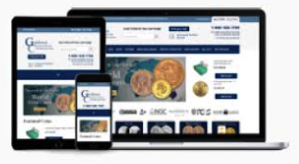One basic marketing concept is the four Ps of marketing: Product, Price, Place and Promotion. Your product pricing strategy must be considered before you build your ecommerce website and establish your marketing program. The real client comparisons below help illustrate pricing’s importance.
Why we will ask about your pricing strategy
Product pricing must always be a consideration before you structure any element of your marketing program. How you price your product communicates its perceived or real value. Some clients want to position their products as exclusive, luxury brands. Others emphasize competitive pricing to encourage an overall higher sales volume.
How pricing impacts your marketing
To illustrate this point, we currently have two clients selling very similar products. They require two very different marketing strategies.
- Client A follows a competitive pricing strategy. He targets people who are comparison shopping. His customers want the best price for the same or similar product. His website does millions of dollars in sales each month. It took about a year after we launched his site to get to that level.
We incorporated website tools that enable him to monitor competitors’ pricing, so his products are nearly always priced according to this strategy. Another tactic we use is Google shopping ads. This ensures his products consistently show up next to others for those shoppers using the same keywords.
- Client B follows a premium pricing strategy. He’s not trying to sell at the lowest cost. His emphasis is on high-end service and relationship building. In addition to his ecommerce website, he has a brick-and-mortar store. He also employs expert consultants who guide customers through the sales process.
Because Client B’s prices skew higher, customers may have to see his messages multiple times before they buy. Retargeting helps him stay in front of the same people we know are interested in buying.
Avoid the temptation of skipping steps
When we onboard a new client, one of our first tasks is to complete a campaign steering document, based on our Code Sheets. This document captures the client’s messaging, target audience, market positioning and unique selling proposition. These elements give us much of the foundational information we need to customize a marketing plan aligned with the client’s goals.
Skipping ahead to the website build or PR, without documenting these details, could easily result in wasted time and budget. You’d be surprised by how many clients change their minds about some of these elements once we start asking the right questions.
Sometimes, they hire us because they have a great product but feel a little foggy about what they want to achieve and how they plan to get there. We help them clarify who they are targeting, what they want to say, and what metrics they should use to measure success. From there, we can help them make decisions closely aligned with their goals.
Media Relations Agency has been helping clients market products for more than 35 years. Our job is to help you avoid the costly pitfalls that may come from working with less experienced agencies. If you’re in the market for a new website or if you’re about to launch a new product, call us first at 952-697-5269 or use this form.







